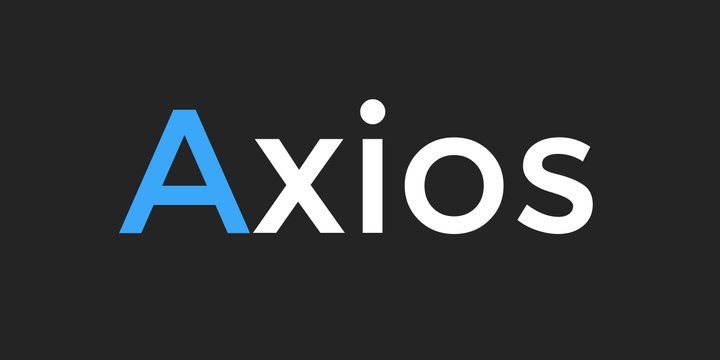1.页面原型
参照现在主流的页面布局发现,大多数页面所采用的布局都分为侧边栏,头部栏和主要资源展示页面三大主体。

参照element组件库我们发现在布局容器中存在我们想要的布局元素

点击展开后复制其中的代码,在上次登入界面创建的Vue框架中views目录下创建一个index.vue文件存放首页界面
1
2
3
4
5
6
7
| <el-container>
<el-aside width="200px">Aside</el-aside>
<el-container>
<el-header>Header</el-header>
<el-main>Main</el-main>
</el-container>
</el-container>
|
将代码插入到其中的标准格式中:
1
2
3
4
5
6
7
8
9
10
11
12
13
14
15
16
| <template>
</template>
<script>
export default{
data(){
return{
}
},
methods:{
}
}
</script>
|
插入后的代码为:
1
2
3
4
5
6
7
8
9
10
11
12
13
14
15
16
17
18
19
20
21
22
23
24
25
26
27
28
29
30
31
32
33
34
35
36
37
38
39
40
41
42
43
44
45
46
47
48
49
50
51
52
53
54
55
56
57
58
| <template>
<el-container>
<el-aside width="200px">Aside</el-aside>
<el-container>
<el-header>Header</el-header>
<el-main>Main</el-main>
</el-container>
</el-container>
</template>
<style>
.el-header, .el-footer {
background-color: #B3C0D1;
color: #333;
text-align: center;
line-height: 60px;
}
.el-aside {
background-color: #D3DCE6;
color: #333;
text-align: center;
line-height: 200px;
}
.el-main {
background-color: #E9EEF3;
color: #333;
text-align: center;
line-height: 160px;
}
body > .el-container {
margin-bottom: 40px;
}
.el-container:nth-child(5) .el-aside,
.el-container:nth-child(6) .el-aside {
line-height: 260px;
}
.el-container:nth-child(7) .el-aside {
line-height: 320px;
}
</style>
<script>
export default{
data(){
return{
}
},
methods:{
}
}
</script>
|
启动service服务后界面如下:

2.侧边栏
2.1模块化设计
如果将所有的vue界面写在同一个项目中,会显得臃肿和难以维护,建议将项目拆分成模块化的设计风格。
将asdie替换成另一个vue页面,在js中引入页面并且声明components主键。
1
2
3
4
5
6
7
8
9
10
11
12
13
14
15
16
17
18
19
20
21
22
23
24
25
26
27
28
| <template>
<el-container>
<el-aside width="200px">
<Asidemenu />
</el-aside>
<el-container>
<el-header>Header</el-header>
<el-main>Main</el-main>
</el-container>
</el-container>
</template>
<script>
import Asidemenu from './aside_menu.vue'
export default{
data(){
return{
}
},
methods:{
},
components:{
Asidemenu,
}
}
</script>
|
在views下创建aside_menu.vue界面引入标准格式,在element中找到侧边栏组件引入,其中index表示单击窗口后url转跳的位置,其中的i标签中的icon标签也可以在element组件中寻找标签名替换。
1
2
3
4
5
6
7
8
9
10
11
12
13
14
15
16
17
18
19
20
21
22
23
24
25
26
27
28
29
30
31
32
33
34
35
36
37
38
39
40
41
42
43
44
45
46
47
48
49
50
51
52
53
54
55
56
57
| <template>
<el-aside style="min-height: 100vh;width: 200px;">
<el-menu default-active="1"
class="el-menu-vertical-demo" router>
<el-menu-item index="/index">
<i class="el-icon-house"></i>
<span slot="title">项目首页</span>
</el-menu-item>
<el-menu-item index="/user">
<i class="el-icon-user-solid"></i>
<span slot="title">用户管理</span>
</el-menu-item>
<el-menu-item index="/order">
<i class="el-icon-setting"></i>
<span slot="title">订单管理</span>
</el-menu-item>
<el-submenu index="/other">
<template slot="title">
<i class="el-icon-more"></i>
<span slot="title">其他项目</span>
</template>
<el-menu-item-group>
<el-menu-item index="/number">
<i class="el-icon-s-data"></i>
数据量统计
</el-menu-item>
<el-menu-item index="/about">
<i class="el-icon-chat-round"></i>
关于
</el-menu-item>
</el-menu-item-group>
</el-submenu>
</el-menu>
</el-aside>
</template>
<script>
export default{
data(){
return{
}
},
methods: {
handleOpen(key, keyPath) {
console.log(key, keyPath);
},
handleClose(key, keyPath) {
console.log(key, keyPath);
}
}
}
</script>
|
2.2页面预览
接下来访问页面原型如下:

2.3建议
在views下创建Home文件夹,将页面所有的vue对象优先创建出来,这样避免思路被中断去构建页面,建议优先完成4中的main设计。
3.头部栏
3.1面包屑组件
在element组件中寻找主流的面包屑组件,它可以直观的显示用户当前所在的页面路径,在这里使用第二种作为演示

同样参照上面模块化设计的原理,在views下创建bread.vue界面引入标准格式,
1
2
3
4
5
6
7
8
9
10
11
12
13
14
15
16
| <template>
</template>
<script>
export default{
data(){
return{
}
},
methods:{
}
}
</script>
|
3.2页面预览

3.3页面改进
这时我们发现无论怎么点击侧边栏中的路径,上边的导航栏都不会改变,这里需要动态获取当前所在的路径名称,创建一个list对象,将当前所在目录下的所有页面目录名称录入
1
2
3
4
5
6
7
8
9
10
11
12
13
14
15
16
17
18
19
20
21
22
23
24
25
26
27
28
| <template>
<div>
<el-breadcrumb separator-class="el-icon-arrow-right">
<el-breadcrumb-item v-for="item in lists" :key="item.path">{{item.meta.title}}</el-breadcrumb-item>
</el-breadcrumb>
</div>
</template>
<script>
export default{
data(){
return{
lists:[]
}
},
methods:{
},
watch:{
$route(to,from){
this.lists=to.matched;
}
},
mounted(){
this.lists = this.$route.matched;
}
}
</script>
|
3.4改进预览

4.主要界面
4.1创建main页面所有的简易页面
参照侧边栏,我们需要构建出以下目录
1
2
3
4
5
6
7
8
9
10
11
12
13
14
15
16
17
18
| views
├─ Home.vue
└─ Home
├─ aside_menu.vue
├─ breadcrumb.vue
├─ index.vue
├─ Login.vue
├─ user
│ └─ index.vue
├─ other
│ ├─ about.vue
│ ├─ index.vue
│ └─ number.vue
├─ order
│ └─ index.vue
└─ index
└─ index.vue
|
在各级目录下创建一些标志性文字,例如about.vue内容:
1
2
3
4
5
6
7
8
9
10
11
12
13
14
15
16
17
18
19
20
| <template>
<div>
<h1>
about
</h1>
</div>
</template>
<script>
export default{
data(){
return{
}
},
methods:{
}
}
</script>
|
4.2路由信息
$route表示在路由中获取meta中的title元素,所有我们需要在路由中设置title元素。
将router中的index.js路由文件改成以下:
1
2
3
4
5
6
7
8
9
10
11
12
13
14
15
16
17
18
19
20
21
22
23
24
25
26
27
28
29
30
31
32
33
34
35
36
37
38
39
40
41
42
43
44
45
46
47
48
49
50
51
52
53
54
55
56
57
58
59
60
61
62
63
64
65
66
67
68
69
70
71
72
73
| import Vue from 'vue'
import VueRouter from 'vue-router'
import Login from '@/views/Home/Login.vue'
Vue.use(VueRouter)
const routes = [
{
path: '/',
name: 'Login',
component: Login
},
{
path: '/login',
name: 'Login',
component: Login
},
{
path: '/Home',
name: 'Home',
meta:{title:'管理系统'},
component: () => import('@/views/Home/index.vue'),
children:[
{
path: '/index',
name: 'index',
meta:{title:'首页'},
component: () => import('@/views/Home/index/index.vue'),
},
{
path: '/user',
name: 'user',
meta:{title:'用户管理'},
component: () => import('@/views/Home/user/index.vue'),
},
{
path: '/order',
name: 'order',
meta:{title:'订单管理'},
component: () => import('@/views/Home/order/index.vue'),
},
{
path: '/other',
name: 'other',
meta:{title:'其他项目'},
component: () => import('@/views/Home/other/index.vue'),
children:[
{
path: '/number',
name: 'number',
meta:{title:'统计量管理'},
component: () => import('@/views/Home/other/number.vue'),
},
{
path: '/about',
name: 'about',
meta:{title:'关于管理'},
component: () => import('@/views/Home/other/about.vue'),
},
]
},
]
}
]
const router = new VueRouter({
mode: 'history',
base: process.env.BASE_URL,
routes
})
export default router
|
将路由中的信息配置成上述,就可以在bread中动态获取各个元素的title数据了。
将路由信息配置完成后,面包屑的功能可以正常使用了,
4.3主页走马灯
走马灯效果在element-ui中显示的效果就是主页的轮播图效果

在assets中创建img文件夹存放图片,在index/index.vue中加入以下代码:
1
2
3
4
5
6
7
8
9
10
11
12
13
14
15
16
17
18
19
20
21
22
23
24
25
26
27
28
| <template>
<div>
<el-carousel indicator-position="outside" height="500px">
<el-carousel-item v-for="item in lists" :key="item">
<img :src="item" alt=""/>
</el-carousel-item>
</el-carousel>
</div>
</template>
<script>
export default{
data(){
return{
lists:[
require('@/assets/img/back01.jpg'),
require('@/assets/img/back02.jpg'),
require('@/assets/img/back03.jpg'),
require('@/assets/img/back04.jpg'),
]
}
},
methods:{
}
}
</script>
|
4.4页面效果

5.页面卡片
2024年5月22日23点14分
5.1卡片页面原型:
基础用法:

带图片的用法:

这里选择使用图片的卡片样式,将其中的代码块部分复制:
1
2
3
4
5
6
7
8
9
10
11
12
13
14
15
16
17
18
19
20
21
22
23
24
25
26
27
28
29
30
31
32
33
34
35
36
37
38
39
40
41
42
43
44
45
46
47
48
49
50
51
52
53
54
55
56
| <el-row>
<el-col :span="8" v-for="(o, index) in 1" :key="o" :offset="index > 0 ? 2 : 0">
<el-card :body-style="{ padding: '0px' }">
<img src="https://shadow.elemecdn.com/app/element/hamburger.9cf7b091-55e9-11e9-a976-7f4d0b07eef6.png" class="image">
<div style="padding: 14px;">
<span>好吃的汉堡</span>
<div class="bottom clearfix">
<time class="time">{{ currentDate }}</time>
<el-button type="text" class="button">操作按钮</el-button>
</div>
</div>
</el-card>
</el-col>
</el-row>
<style>
.time {
font-size: 13px;
color: #999;
}
.bottom {
margin-top: 13px;
line-height: 12px;
}
.button {
padding: 0;
float: right;
}
.image {
width: 100%;
display: block;
}
.clearfix:before,
.clearfix:after {
display: table;
content: "";
}
.clearfix:after {
clear: both
}
</style>
<script>
export default {
data() {
return {
currentDate: new Date()
};
}
}
</script>
|
将其中的卡片放置在走马灯效果下,其中v-for循环的内容可以根据页面所需的卡片数量调整,可以通过list函数中的内容获取,修改其中的index/Index.vue的源码如下:
1
2
3
4
5
6
7
8
9
10
11
12
13
14
15
16
17
18
19
20
21
22
23
24
25
26
27
28
29
30
31
32
33
34
35
36
37
38
39
40
41
42
43
44
45
46
47
48
49
50
51
52
53
54
55
56
57
58
59
60
61
62
63
64
65
66
67
68
69
70
71
72
73
74
75
76
77
78
79
80
81
82
83
84
85
86
87
88
89
90
91
| <template>
<div>
<!-- 跑马灯 -->
<el-carousel indicator-position="outside" height="300px">
<el-carousel-item v-for="item in lists" :key="item">
<img :src="item" alt="" />
</el-carousel-item>
</el-carousel>
<!-- 卡片 -->
<el-row>
<el-col :span="6" v-for="(o, index) in cardlist" :key="o" :offset="index > 0 ? 0 : 0">
<el-card :body-style="{ padding: '0px' }">
<img :src="o.img"
class="image">
<div style="padding: 14px;">
<span>{{o.title}}</span>
<div class="bottom clearfix">
<time class="time">{{ currentDate }}</time>
<el-button type="text" class="button">操作按钮</el-button>
</div>
</div>
</el-card>
</el-col>
</el-row>
</div>
</template>
<script>
export default {
data() {
return {
lists: [
require('@/assets/img/back01.jpg'),
require('@/assets/img/back02.jpg'),
require('@/assets/img/back03.jpg'),
require('@/assets/img/back04.jpg'),
],
cardlist:[
{title:"卡片1",img:require('@/assets/img/top1.jpg')},
{title:"卡片2",img:require('@/assets/img/top2.jpg')},
{title:"卡片3",img:require('@/assets/img/top3.jpg')},
{title:"卡片4",img:require('@/assets/img/top4.jpg')},
],
currentDate: new Date()
}
},
methods: {
}
}
</script>
<style scoped>
.el-card__body img{
width: 100%;
}
.el-carousel__container img{
height: 100%;
width: 100%;
}
.time {
font-size: 13px;
color: #999;
}
.bottom {
margin-top: 13px;
line-height: 12px;
}
.button {
padding: 0;
float: right;
}
.image {
width: 100%;
display: block;
}
.clearfix:before,
.clearfix:after {
display: table;
content: "";
}
.clearfix:after {
clear: both
}
</style>
|
注意其中的span值,在element布局中,默认将页面等分成24分,span=6就是占24份中的6分,详情可以参考element官方源码,其中还有根据页面分辨率大小调整span所占比例的办法

5.2Col Attributes
| 参数 |
说明 |
类型 |
可选值 |
默认值 |
| span |
栅格占据的列数 |
number |
— |
24 |
| offset |
栅格左侧的间隔格数 |
number |
— |
0 |
| push |
栅格向右移动格数 |
number |
— |
0 |
| pull |
栅格向左移动格数 |
number |
— |
0 |
| xs |
<768px 响应式栅格数或者栅格属性对象 |
number/object (例如: {span: 4, offset: 4}) |
— |
— |
| sm |
≥768px 响应式栅格数或者栅格属性对象 |
number/object (例如: {span: 4, offset: 4}) |
— |
— |
| md |
≥992px 响应式栅格数或者栅格属性对象 |
number/object (例如: {span: 4, offset: 4}) |
— |
— |
| lg |
≥1200px 响应式栅格数或者栅格属性对象 |
number/object (例如: {span: 4, offset: 4}) |
— |
— |
| xl |
≥1920px 响应式栅格数或者栅格属性对象 |
number/object (例如: {span: 4, offset: 4}) |
— |
— |
| tag |
自定义元素标签 |
string |
* |
div |
5.3页面效果

6.页面美化
6.1侧边栏的美化
侧边栏的主题颜色一般与页面主体的颜色不同,一般是做深颜色的处理用来突出显示,这里我们参照element写好的自定义颜色列表做设计。
1
2
3
4
5
6
7
8
9
| <el-menu
default-active="2"
class="el-menu-vertical-demo"
@open="handleOpen"
@close="handleClose"
background-color="#545c64"
text-color="#fff"
active-text-color="#ffd04b">
<el-submenu index="1">
|
发现其中主要颜色背景部分由这些决定background-color=”#545c64”
text-color=”#fff”
active-text-color=”#ffd04b”。将这段带面添加到aside中
1
2
3
4
5
6
7
8
9
10
11
12
13
14
15
16
17
18
19
20
21
22
23
24
25
26
27
28
29
30
31
32
33
34
35
36
37
38
39
40
41
42
43
44
45
46
47
48
49
50
51
52
53
54
55
56
57
58
| <template>
<el-aside style="min-height: 100vh;width: 200px;">
<el-menu default-active="1" class="el-menu-vertical-demo" router background-color="#545c64" text-color="#fff"
active-text-color="#ffd04b" style="height: 100vh;">
<el-menu-item index="/index">
<i class="el-icon-house"></i>
<span slot="title">项目首页</span>
</el-menu-item>
<el-menu-item index="/user">
<i class="el-icon-user-solid"></i>
<span slot="title">用户管理</span>
</el-menu-item>
<el-menu-item index="/order">
<i class="el-icon-setting"></i>
<span slot="title">订单管理</span>
</el-menu-item>
<el-submenu index="/other">
<template slot="title">
<i class="el-icon-more"></i>
<span slot="title">其他项目</span>
</template>
<el-menu-item-group>
<el-menu-item index="/number">
<i class="el-icon-s-data"></i>
数据量统计
</el-menu-item>
<el-menu-item index="/about">
<i class="el-icon-chat-round"></i>
关于
</el-menu-item>
</el-menu-item-group>
</el-submenu>
</el-menu>
</el-aside>
</template>
<script>
export default {
data() {
return {
}
},
methods: {
handleOpen(key, keyPath) {
console.log(key, keyPath);
},
handleClose(key, keyPath) {
console.log(key, keyPath);
}
}
}
</script>
|
6.2页面展示

























